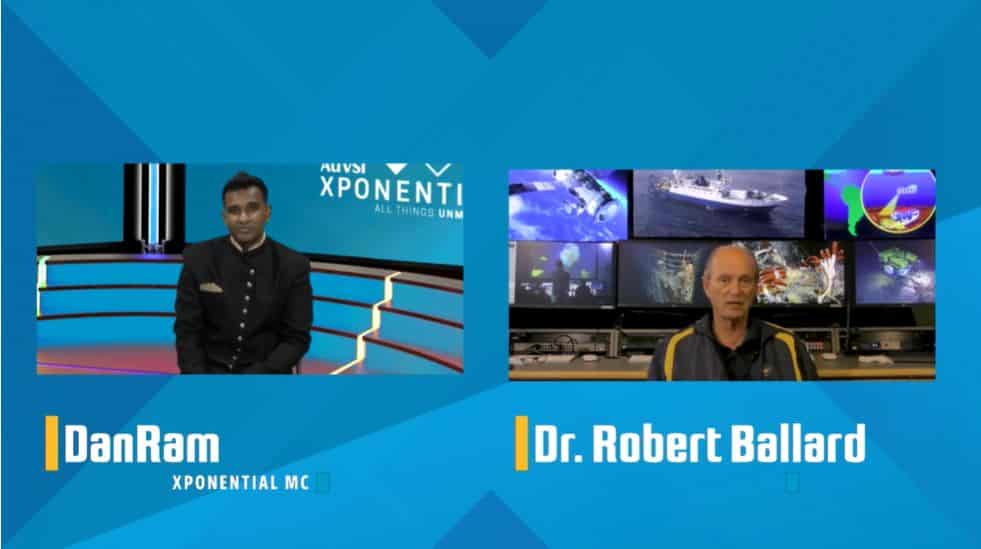Dr. Robert Ballard highlights discoveries of Titanic, unique underwater creatures using ROVs and deep-sea submersibles
October 6, 2020 | AUVSI News

Widely considered a pioneer in the development of deep-sea submersibles and remotely operated vehicle (ROVs) systems, Dr. Robert D. Ballard provided an overview of some of his most legendary discoveries and accomplishments during the Tuesday morning keynote at Xponential.
Over the course of several decades, Dr. Ballard traveled to some of the deepest depths of the ocean via submersibles and along the way, made discoveries that would either confirm or question long held scientific beliefs. One such exploration confirmed the theory of plate tectonics, which states that the Earth’s solid outer crust, the lithosphere, is separated into plates that move over the asthenosphere, the molten upper portion of the mantle. Oceanic and continental plates come together, spread apart, and interact at boundaries all over the planet.
Another unique discovery made during an exploration of the ocean was that of creatures living around underwater hot springs. These incredibly complex creatures were living in an area of eternal darkness where there was no sunlight, which ran counter to the process of photosynthesis. It was discovered that a bacterium called an extremophile had figured out over time how to duplicate the process of photosynthesis in the dark, and that life began in hydrothermal vents, which opened up the prospects of having life pervasively throughout the universe and even within our own solar systems.
“These were very heady days as we were rewriting all the science books,” Dr. Ballard said.
While these discoveries were captivating, Dr. Ballard found himself frustrated with how difficult it was getting to work, as he spent most of his time in a submersible traveling to and from locations in the ocean, with little time spent in the office. He had a vision of being able to send his spirit to the depths of the ocean instead of his physical body, a concept known as telepresence, which led to the development of Argo, an unmanned vehicle capable of exploring the ocean 24 hours a day while he remained on land.
Argo is most famous for its role in the discovery of the wreck of the RMS Titanic in 1985. The vehicle also played a key role in Dr. Ballard’s discovery of the wreck of the battleship Bismarck in 1989.
Always willing to cross over to other worlds to meet new people, Dr. Ballard described divisions as “artificial.” He has spent his career breaking down traditional barriers between various disciplines to achieve his objectives. The key to this, he said, is figuring out how to maximize the positives, and in the process, eliminate the negatives.
“What I’ve been doing through my life is figuring out a way of developing partnerships where I only focus on your plusses, and I use other organizations to cover your minuses,” he explained. “If you pull it off alright, you get all plusses.”
Dr. Ballard is currently leading a modern-day version of the Lewis and Clark expedition to map a newly enlarged United States of America. In an interview with AUVSI earlier this year, Dr. Ballard explained that this isn’t the second Lewis and Clark expedition, though, “because Lewis and Clark had a Corps of Discovery, which is what he called his men, and they were all men except for Sacajawea,” he explained.
“We call our team the Corps of Exploration, and 55 percent of our team are women in positions of leadership and authority, so we call it the Lois and Clark expedition. So, it’s pretty exciting.”
- Industry News


